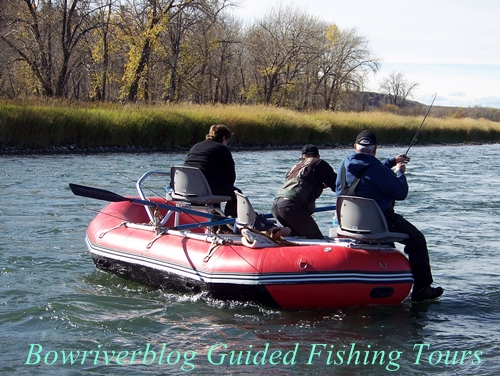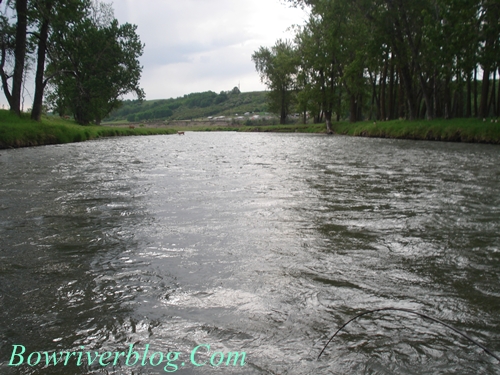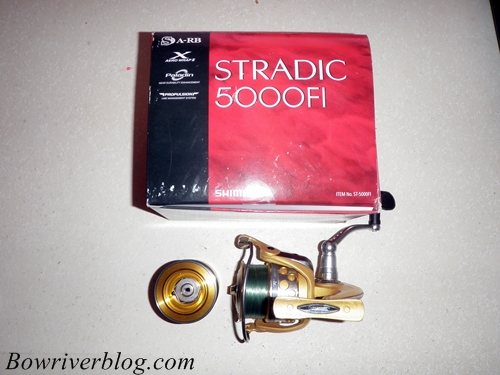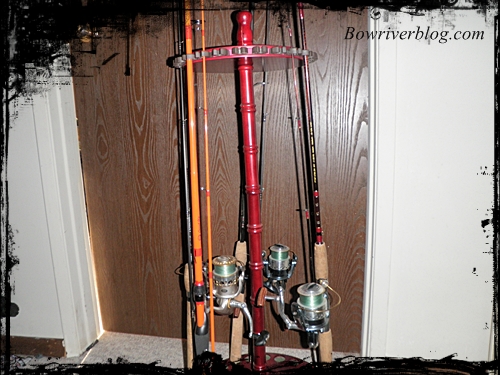A Guided Float Fishing Trip
My eyelids creek open at the sound of the radio blaring in my left ear, after all I am a deep sleeper and need to make sure I awake and shower for the day ahead. I am due at the river in two hours so I need to make sure I never hit the snooze button. Two clients are waiting for their big day on the Bow River. There is much to plan for before one hook even touches the water. I make sure all the reels have fresh line and all the hooks we will be using are well organized and easily accessible. I want to make sure my two clients make the most of their time on the water, every second counts to me. I meet them at the coffee shop and shake hands with an introduction, “Hello I’m Mike Robertson, nice to meet you” I say before lining up to get a much needed coffee into me. “Would you like a coffee as well” I ask them both. “Yes please”.
We sip coffee and chat about the river, my mind is already thinking about the river. In my mind I am planning where we are going to pull over, thinking about where I caught trout the day before while out on reconnaissance. I am picturing the river in my mind, the grassy banks where the fish are eating grasshoppers falling off into the rivers edge. The undercut dwellings where the fish are swimming, looking for their morning meal. I am thinking like the trout, getting into their minds. They are smarter than you think so you must be smarter! You must be precise with your casts and you must be fast, very fast.
Upon arrival at the boat launch, I string up the rods for the days trip tightening down the mono, carefully cinching the knot down to the split ring of the Rapala. I never want a trout to break free of a clients hook! I then undo the tie-downs from the trailer and then back the car into the river. That’s when my heart starts to beat faster, I know what is about to happen. “Are you ready for this” I ask them with a smile. “Let’s do it”. I then help both the clients into the boat making sure they are safe when they enter the Saturn inflatable. I shove the boat hard into the current of the Bow River and we are off, six thirty AM and we are finally floating.
I row aggressively to reach the far shoreline; the paddles glide into the choppy waves on every stroke. Across the far bank is a small creek which meets the main channel. The trout are usually on the bite here! A perfect cast is placed just two inches from the bank and the lure is ripped away and paused, then it is slowly retrieved back to the boat. Before the lure is even half way in, a trout grabs onto the minnow offering and breaches the surface to shake loose. “Looks like it is going to be one of those days” I say cheerfully! The client is thrilled as we net the rainbow and pause for a quick picture.
Many more fish are caught and released after two hours of fishing. It’s lunch time and we decide to pull over to eat, the food is devoured after all that hard work casting and reeling in hard fighting trout. The wind picks up and blows across my left cheek; it is a southern wind and cools us down. We make some casts from our shaded spot along the shoreline where take a twenty two inch brown trout that was lying close to shore sharing the shade of the overhanging cotton woods. Not a monster fish by Bow River standards, but the markings on this male was astounding.
We quickly make our way down river moving back and forth across the river to access the best fishing water possible. One more bend around the corner and the float trip is finished. I row the boat hard to reach one more back pool in the river. The boat drifts into the corner and glides onto the shoreline. Two more fish take the Rapala crankbait in this deep back pool. Then we shove off the water’s edge and dock the boat at McKinnon Flats. Fatigued from the long day and the hot sun, we load the boat onto the trailer and pause for some deep breaths of air. Jim says, “That was an awesome day, I have never caught so many trout in one day. Thank you so much for guiding us today Mike, we will be back out with you again very soon”. A generous tip is offered and willingly accepted. As we drive away from McKinnon Flats I can’t help but think of just one more fish. Not the fish that got away but the one’s that are yet to be caught!




